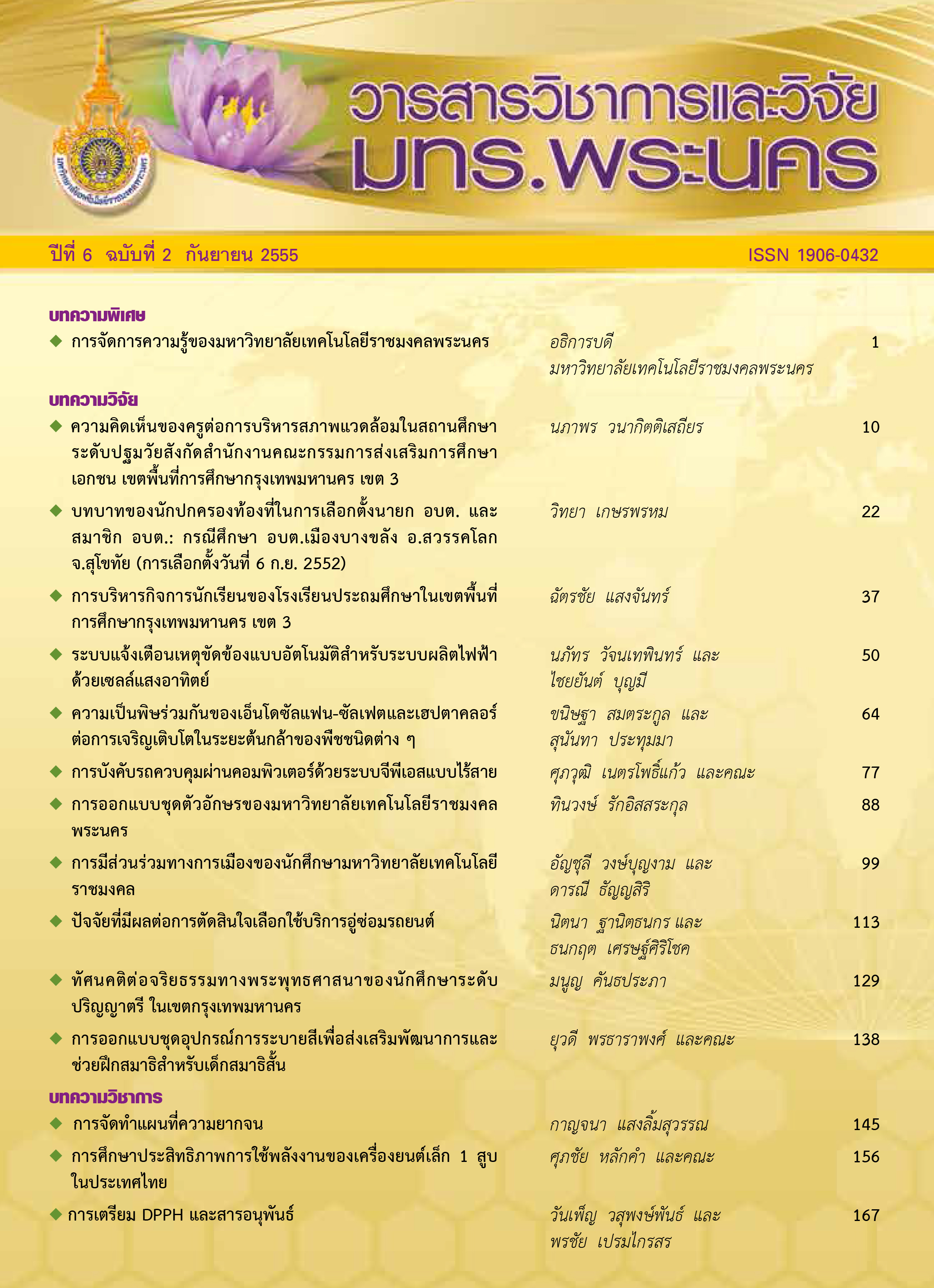ผลของการลวกดอกขี้เหล็กในน้ำเกลือต่อคุณภาพชาจากดอกขี้เหล็ก
Main Article Content
Abstract
บทคัดย่อ
งานวิจัยนี้ศึกษาผลการลวกดอกขี้เหล็กในน้ำเกลือเพื่อปรับปรุงคุณภาพในการผลิตชาจากดอกขี้เหล็กโดยปัจจัยที่ทำการศึกษามีดังนี้ (1) เวลาในการลวก 2 ระดับ : 3 และ 5 นาที (2) ความเข้มข้นของน้ำเกลือต้มเดือด 2 ระดับ : 1 และ 3% (นน./ปริมาตร) และใช้ดอกขี้เหล็กที่ไม่ผ่านการลวกในน้ำเกลือเป็นชุดควบคุมผลการศึกษา พบว่า ชาที่ผ่านการลวกในน้ำเกลือที่ความเข้มข้นต่าง ๆ กันจะมีผลให้คุณภาพของชาในด้านปริมาณความชื้น ค่า aw ค่าสี ค่าความเป็นกรดด่าง ความขุ่น ปริมาณกรดแอสคอร์บิก ฤทธิ์การต้านอนุมูลอิสระ รวมทั้งคุณภาพทางประสาทสัมผัสที่แตกต่างกันอย่างมีนัยสำคัญ (p < 0.05) กับชาจากดอกขี้เหล็กที่ไม่ผ่านการลวก และพบว่า สภาวะการลวกที่เหมาะสม ประกอบด้วย การลวกดอกขี้เหล็กในน้ำเกลือต้มเดือดความเข้มข้น 1%เป็นเวลานาน 5 นาที จะให้ชาที่มีคุณภาพดีที่สุด
คำสำคัญ : ดอกขี้เหล็ก; การลวกน้ำเกลือ; ชาดอกขี้เหล็ก
Abstract
This research aims to study the effects of blanching Khi Lek (Cassia siamea Lamk)flowers in brine in order to improve the qualities of Khi Lek flower tea production. The studycomprised two factors: (1) two-time intervals for blanching: 3 and 5 minutes; (2) twoconcentrations of brine: 1% and 3% (w/v) and a control using Khi Lek flowers without blanching.The findings of the study stated as follows: blanching with different concentrations of boilingbrine contributed to significantly different qualities of outcomed tea products in the aspectsof moisture content, aw, color, turbidity, ascorbic acid content, antioxidant activity, and theobserved sensory evaluation as compared to the control without blanching. Moreover, theoptimum blanching conditions consisted of blanching with boiling 1% brine for 5 minutes toobtain the best qualities of Khi Lek flowers tea product.
Keywords : Khi Lek (Cassia siamea Lamk) Flowers; Blanching; Brine; Khi Lek Flower Tea


